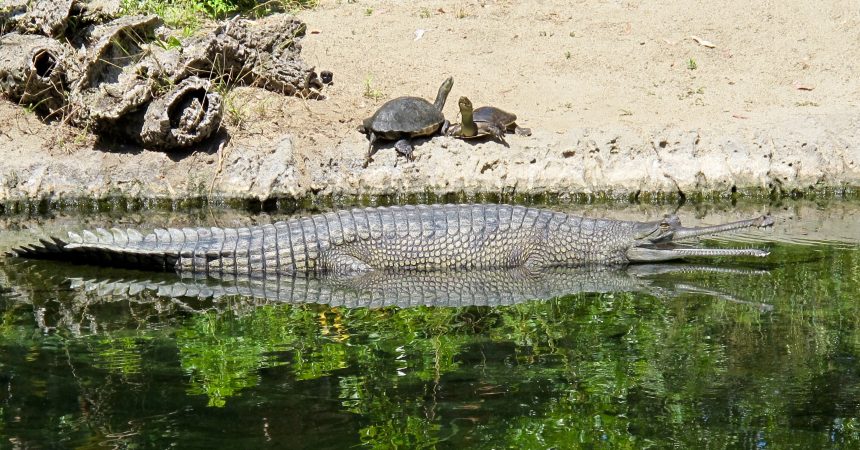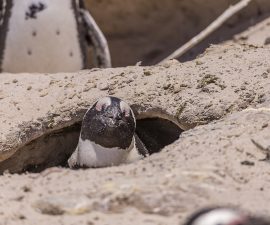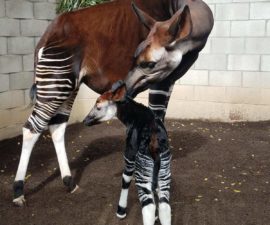If you need another reason to saunter through Reptile Walk at the San Diego Zoo, make a reptilian rendezvous at the mesmerizing mixed-species exhibit just down from the Galápagos tortoises. A large pool with basking logs and sandy beaches is home to about 15 species, most of which are critically endangered. It’s an underwater ballet of turtle species, dashed with slow-motion high drama, and sprinkled with a gaggle of gharials gliding past with Zen-like grace. I find the whole aquatic scene hypnotic.
They say change is good, but apparently crocodilians don’t agree—their body structure has changed very little in the past 190 million years. The gharial (GAR-ee-uhl) is one of the largest crocodilians (a group that includes crocodiles, alligators, and caimans), and known for its outrageously long, skinny snout. Mature males grow a bulbous nasal appendage at the far end of that schnozzle, which allegedly resembles a type of Indian pot called a “ghara,” hence the name gharial. Both sexes have “nares” on the top of their nose for breathing while mostly submerged. But this critically endangered species can snooze completely underwater for hours without coming up for air! Also notable are its spear-like pearly whites, ideal for capturing fish. “They lose their teeth regularly, but they grow back in quickly,” said Tommy Owens, senior keeper of the Zoo’s reptiles. He said they call the gharials in once a week to hand feed them a tasty trout or mackerel to get a close, healthy look at them.
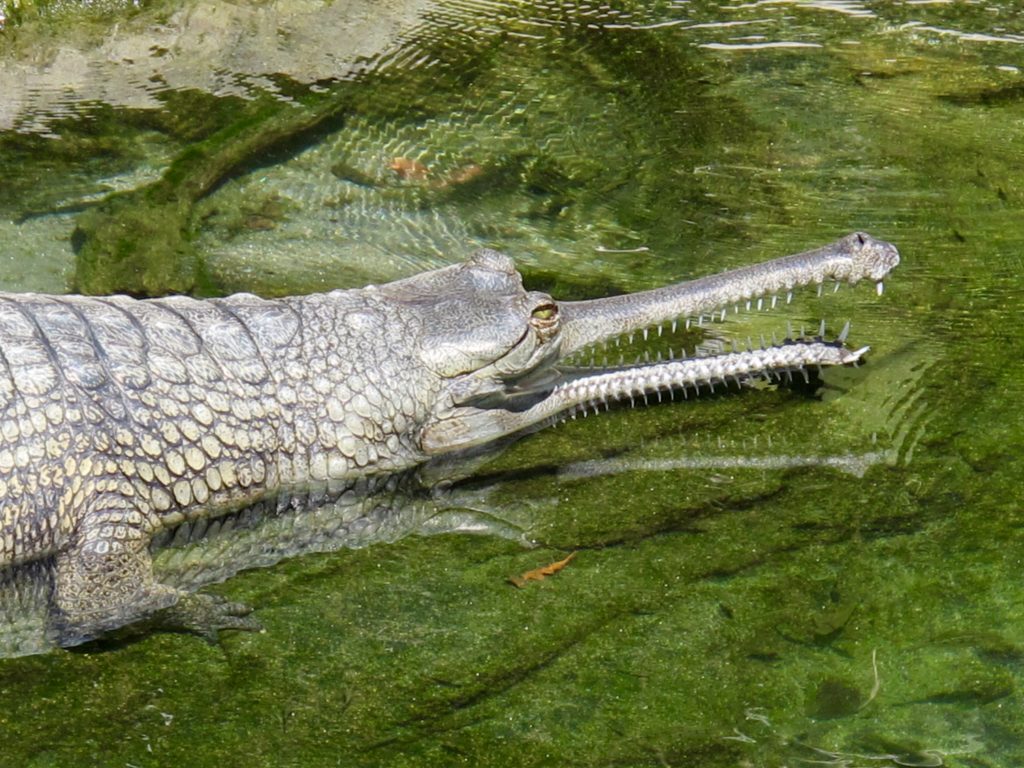
Gaping gharial! Like all reptiles, this crocodilian must regulate its body temperature by external means: basking in the sun warms it up, bathing in water helps it chill. To cool its head and brain, the gharial gapes its mouth open.
What also had me gobsmacked were the gigantic narrow-headed softshell turtles who lumber into circular underwater “sand pits” and quickly dig themselves in. Largely unnoticed, it’s the perfect hunting strategy, as they can swiftly shoot their narrow head out two feet or so to catch a hapless fish, frog, or crustacean. Back in their homeland, they do this in the deep, sandy rivers of India and other southern Asia countries. It’s also the perfect “nothing to see here” camouflage against predators. This pool at the Zoo was designed years ago with these guys in mind, and they make full use of the underwater turtle tubs. As we chatted, one of the narrow-headed softshell turtles remained tucked beneath a veil of sand without coming up for air. Tommy explained that “they have blood vessels close the surface of the skin, which helps them absorb oxygen and they don’t have to surface as often to breathe.”
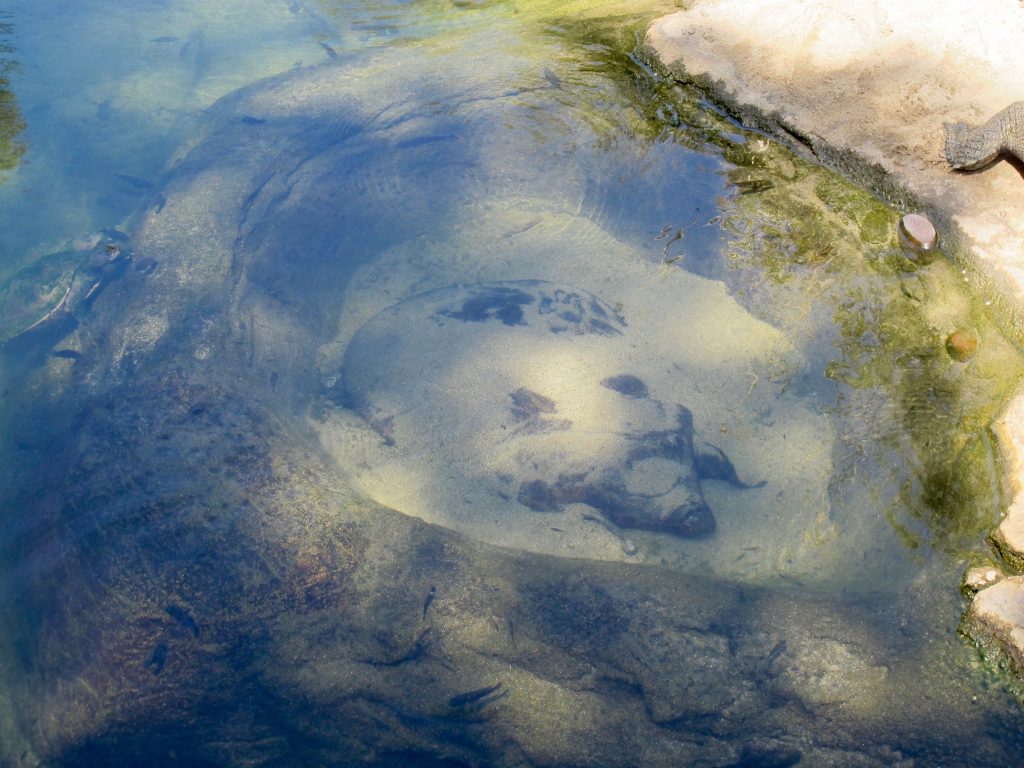
Turtle tub: The narrow-headed softshell turtle is tucked into a sand pit where it can ambush prey or just get some shut eye.
I kept peering into the pool for a look at Indian flapshell turtles with long necks and handy femoral flaps on its plastron that seal up its limbs like a gift box when it retracts into its shell. The Fly River turtles, named for their native river in Papua New Guinea, are crazy smart omnivores that are mostly aquatic, but leave the water to nest, like many other turtle species. In fact, morning keepers diligently and delicately follow any turtle tracks left in the sand, which may lead to a nest. “Sometimes we find the baby turtles on the beach, and we quickly remove them to nurture behind the scenes so the local birds, like egrets, don’t eat them,” said Tommy.
Whether it’s a painted, Parker’s, pond, broad-shelled, red-bellied, or striped-necked, there’s a turtle type for everyone! And those gallant gharials will be glad you took a gander at their gorgeous home.
Karyl Carmignani is a staff writer for San Diego Zoo Global. Read her previous blog, Wildwatch Kenya: Safari Surprise.

